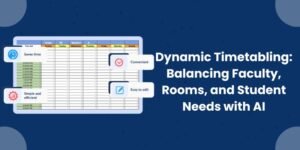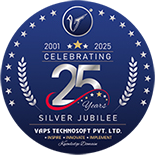Competency-based medical training is the future of healthcare education. It focuses on what medical trainees can do rather than how long they have studied. In today’s fast-moving world, traditional training methods are no longer enough. With patient safety, skill mastery, and outcome-based learning in focus, clinical training needs to adapt. Digital tools are playing a key role in this shift.
Digitalization in healthcare education offers a smarter, more efficient way to track progress, manage learning, and ensure every student becomes a competent healthcare professional. In this blog, we will explore how digital tools are shaping competency-based medical training.
What Is Competency-Based Medical Training?
Competency-based medical training (CBMT) is an approach where the emphasis is on skills and outcomes rather than time spent in training. It asks, “Can the student perform this task to the required standard?” This method ensures that all medical professionals reach the same skill level before moving on, regardless of how quickly or slowly they learn.
CBMT has been adopted globally. It has proven to improve clinical skills, patient care, and trainee satisfaction. The core idea is simple: measure learning through actions and results.
Key Components of CBMT
CBMT revolves around outcome-based learning, where the focus is on what the student can do in a real-world setting. It relies heavily on the assessment of practical skills that reflect real clinical environments. Continuous feedback and improvement form the backbone of this model, allowing students to grow steadily. It also allows for an individual learning pace, recognising that each learner progresses at a different speed. Finally, there are clear standards defined for each competency to ensure uniformity and fairness.
Why Digital Tools Are Essential in Competency-Based Training
Tracking clinical competencies manually is a huge challenge. Paper records, spreadsheets, and fragmented systems can lead to errors and missed progress. Digital tools fix this.
They offer real-time tracking, data collection, and analysis. They help educators spot learning gaps early. They also provide trainees with a clear view of their own progress.
Benefits of Digital Tools in Clinical Skill Tracking
Digital tools provide accurate and real-time tracking of clinical performance. They allow easy access to performance data, making it convenient for educators and students to view progress anytime. These tools also generate custom reports for each student, which helps in evaluating growth and identifying weak areas. For instructors, the reduction in paperwork means more time for teaching. Digital platforms also support remote monitoring, making training more flexible. Features to look for in clinical skill tracking tools, when selecting a digital platform
Features to Look for in Clinical Skill Tracking Tools
When selecting a digital platform for clinical training, certain features make all the difference. These tools should be easy to use, customisable, and mobile-friendly.
Must-Have Features
Effective clinical skill tracking tools come with skill-based dashboards that offer a clear view of student progress.
Mobile apps enable data entry on the go, which is especially useful in busy clinical environments.
Customisable checklists help adapt the platform to different medical roles and specialties.
Automatic report generation saves administrative time, and secure cloud storage ensures data is safely accessible from anywhere.
The Role of Analytics in Competency Development
Analytics help convert data into insights. Digital platforms use analytics to measure performance trends, detect weak areas, and predict outcomes. Trainers can then personalise learning paths for each student.
By using analytics, educators can focus more on teaching and less on admin work. Students can see where they stand and what they need to improve.
Key Analytics Functions
Competency gap analysis helps identify areas where students need improvement. Progress tracking across departments allows institutions to monitor group and individual performance efficiently. Comparative performance reports assist in benchmarking, while skill heatmaps provide quick visual insights into student proficiency levels.
How Digital Tools Improve Feedback and Assessment
In CBMT, feedback is vital. It must be timely, specific, and ongoing. Digital platforms allow instant feedback. Clinical instructors can assess skills and give feedback in real-time using mobile devices or web portals.
Digital Feedback Advantages
Real-time feedback greatly enhances learning as students can immediately apply suggestions. In-app comments allow instructors to provide specific guidance quickly. Visual reports help in showing progress over time, making skill development easier to track. These platforms also store past feedback, enabling long-term improvement through historical comparisons.
Ease of Use for Faculty and Students
A system is only as good as its ease of use. Good digital tools are designed with both instructors and students in mind. They require little training and integrate into daily routines.
User-Friendly Features
Simple user interfaces make it easy for all users to operate the system without extensive training. Quick data entry options are ideal for busy clinicians. Personal dashboards help users focus on their specific roles and progress. Built-in support and training modules help new users get started without hassle.
Promoting Standardisation in Clinical Education
One major advantage of digital skill tracking tools is the ability to standardise assessments. Everyone is graded on the same criteria. This brings fairness and consistency to clinical training.
It also helps large institutions keep track of thousands of students at once. Reports and results are centralised, making audits and reviews much easier.
Standardisation Benefits
Uniform assessments ensure all students are evaluated using the same criteria. Centralised data storage makes it easy to access student records. These tools streamline compliance checks, improving transparency. Benchmarking between batches becomes possible with consistent reporting.
Remote Learning and Tele-Assessment Support
Many training sessions now happen outside the classroom. Digital platforms make it easy to assess students remotely. This flexibility supports students in rural areas or during emergencies.
Remote Capability Highlights
Live skill tracking via mobile apps lets instructors monitor student performance remotely. Video upload options allow students to submit practical assessments without being on-site. Virtual supervision features connect trainers and trainees across distances. Cloud-based access ensures that learning continues from any location.
Future Trends in Digital Medical Training
As healthcare evolves, digital training tools will keep getting smarter. AI, machine learning, and advanced analytics will soon help trainers predict outcomes and personalise learning paths more accurately.
We can also expect better integration between hospitals and educational institutions. This will lead to smoother transitions from training to practice.
What’s Next?
Future advancements may include AI-assisted skill evaluations that increase accuracy. Virtual reality simulations will offer immersive learning experiences. Real-time mentoring dashboards will connect trainers and students more effectively. Better integration with hospital systems will streamline clinical placements.
Competency-based medical training ensures every healthcare worker is truly prepared for their role. But to make it work at scale, we need digital tools. These tools save time, boost accuracy, and ensure every student gets the guidance they need.
To improve clinical training outcomes, start by digitising your skill tracking. The future of medical education is smart, skill-focused, and digital.












